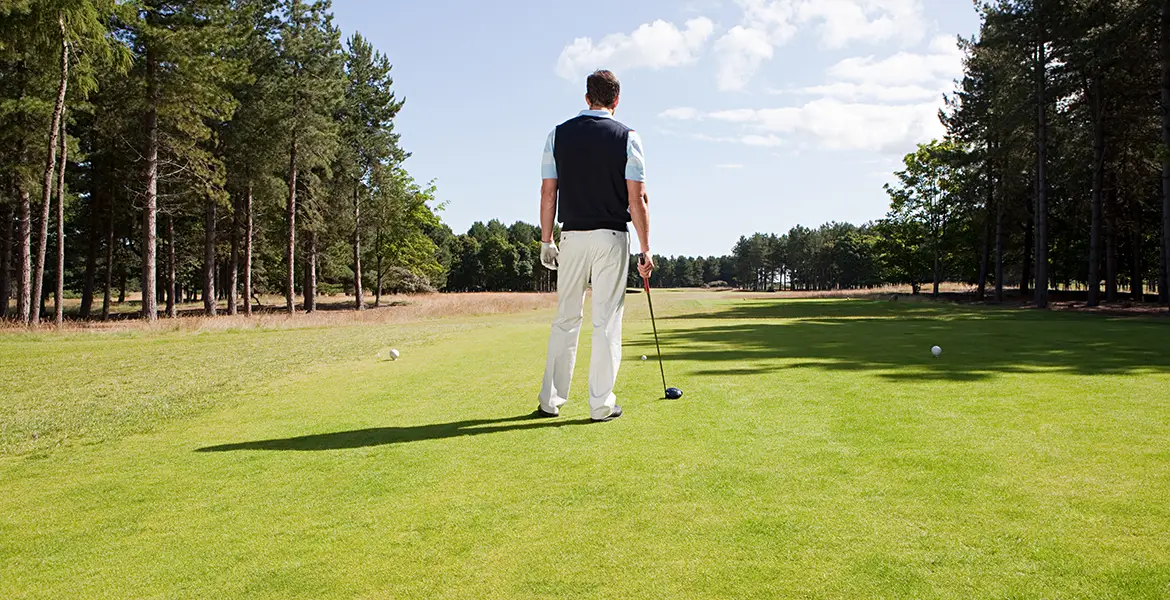Tiger Woods has won, some would say, enough—61 times on the PGA Tour, and each of the four majors more than once, a feat only Jack Nicklaus has equaled. He took some of those majors by record margins: by 12 strokes at the 1997 Masters 10 years ago, opening the Tiger Epoch with a roar; by 15 at the 2000 U.S. Open at Pebble Beach, breaking a mark set by Old Tom Morris in the 1862 British Open. Seeing Tiger lap the field is sweet; but also sweet, for his enormous couch-potato gallery, are his eked-out victories, as in the 1999 PGA Championship at Medinah or the 2006 British Open at Royal Liverpool.
I fondly remember, from a few years back, a Sunday round in some tournament, maybe the Bay Hill Invitational, where, on an hour’s sleep and with a stomach bug that kept sending him into the bushes, he managed to win. “I had to,” he told his father at the end. After the 2007 Tour Championship, his World Golf Ranking, which takes into account tournaments played abroad, numbered 24.36, more than twice that of second-place Phil. And he will be voted by his fellow players, for the ninth time, the Golfer of the Year.
He is Goliath; nevertheless we root for him. Is it because he is, sort of, a black man, dominating a sport where black men have customarily shined the shoes left in the club locker room? Is it his sweet, only slightly wary interview smile, and his bearing up with so much graceful modesty under all the pressure the sports world can inflict?
As with Arnold Palmer before him, his body English and facial expressions let us into his game. He hits miracle shots when he is hot, and grinds out those chips and five-foot putts when he is not. He brings to golf an intensity and a reverence that its august history and perennial difficulty deserve.
So what is he going to do for us in the next decade? The 30s are usually a golfer’s prime, as Woods has pointed out in interviews. He was a pioneer of vigorous physical conditioning, which in the good old days of golf consisted mostly of bellying up to the bar; he is not apt to get slushy in the abdomen. Still, the golf swing, with its demand for extension and torque, exacts wear and tear on the human frame, and his swing—let’s face it—is not effortless. He appears to goose the ball at the last nanosecond and to nearly jump out of his shoes. Vijay Singh and Ernie Els are prettier.
Though a bigger man than Ben Hogan, Tiger has Hogan’s fast hips and slashing, all-out manner, rather than Snead’s durable ease. He has already come through a knee operation and disconcerting spells of wildness off the tee, which his valiant scrambling ability and steely putting nerves have done much to offset. Still, there is something precarious at the heart of his swing that keeps his swing doctors, the ones he hires and the millions of unpaid diagnosticians, on the job. It might catch up to him, along with the swarm of younger golfers pouring out of the colleges and the British dominions. Golf has become a very attractive career in the Tiger era.
Certain events off the course are likely to occur in the next decade. He has become a father. His characteristic sense of responsibility and the strong family feelings he has evinced as a son may cut into his already severely rationed playing time. Family life supposedly settles athletes down, but Phil Mickelson’s late summer disappearance from competition hasn’t helped his statistics, or his image. In the coming decade, Tiger’s own image will age; already, his once cherubic visage is marked by countless competitive hours in the sun. Now, on camera, when he squints and grimaces in the wake of an imperfect shot, it is the creased grimace of a fully grown man—a veteran.
From the standpoint of the advertisers (Gillette, Nike, Buick, Accenture) who provide most of his prodigious income, he may still appeal to the much-courted 20s demographic, but he is no longer of it. The magnetic presence he exerts in his light-hearted television commercials depends on his continuing to shine in golf tournaments; a great ongoing weight of tangible and intangible assets rests on a slender edge, the difference between good golf and winning golf. A few long putts not dropping, a few more pushes off the tee, and his dominance could end as irrevocably as Palmer’s did after he blew a seven-shot lead in the 1966 U. S. Open.
Perish the thought. Tiger has been sustained as a young man by a genuine love of the game and an innocently rapacious desire to beat everybody else. In his book How I Play Golf, he says to the reader, “You may find this hard to believe but even when I’m grinding on the final nine of a tournament, I’m having a blast…. I believe even the most stoic player is having the time of his life when the game is on. If he isn’t he shouldn’t be playing.”
He began playing in public early, as a child prodigy performing trick shots on television, and then as a teenage sensation racking up an unprecedented three consecutive U.S. Amateurs. He is a Bobby Jones who didn’t retire, who didn’t stay amateur, whose professional success is corporation scale—a private jet, a 155-foot yacht, his own golf course design company. A question is, how playful can a corporation continue to be? For a curious gaiety of relaxation—of not trying too hard, of not trying to bully the course but flowing along with it—is part of golf’s incorruptible magic.
In the decade ahead, not only his body but his spirit might show wear. Could success begin to bore him? Any golfer knows the pitfalls of the wandering mind, of no longer granting golf’s measured pace and finicky adjustments the focus they demand. Look at the greatly gifted John Daly’s appealing but crippling diffidence. Tiger’s triumph is that he not only shouldered great expectations but exceeded them. His announced goal, to surpass Nicklaus’ record of 18 majors (or call it 20, counting U.S. Amateurs as majors) should be reached in the next decade, barring calamitous infirmity or distraction.
But the goal may be achieved in the soured, so-what atmosphere that has clouded the successful assaults, beginning with Roger Maris and ending, for now, with Barry Bonds, on Babe Ruth’s epochal record of 60 home runs in one season. The equipment did it, or chemicals. A sentimental vengeance is taken on those who shatter sacred marks and dethrone old gods. They will be forgiven if they do it in divine style. Style is what makes strivers into heroes. If he overtakes Nicklaus comfortably, as his natural right, Tiger will be certified as the greatest golfer since Young Tom Morris. If he struggles at it, and makes it look laborious, he will go from being a wonder to being one more plugger in the lucrative workhouse of sports.






